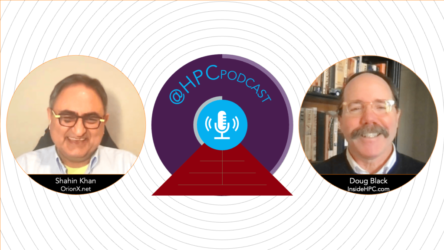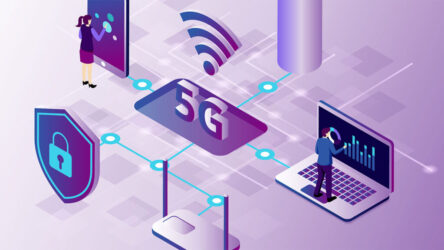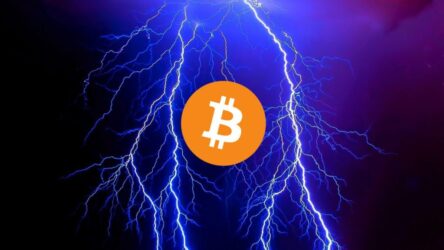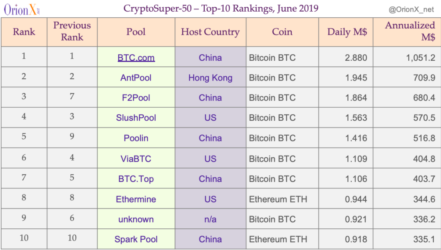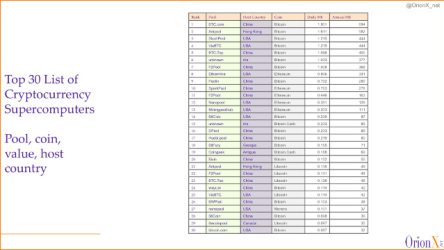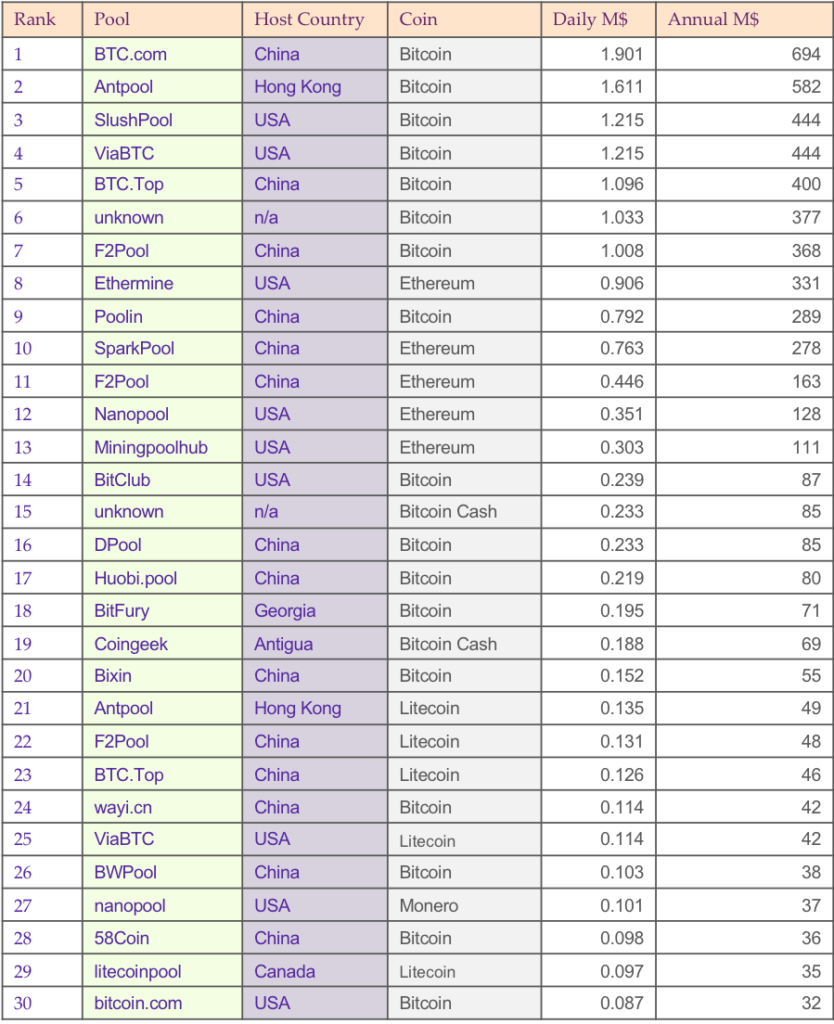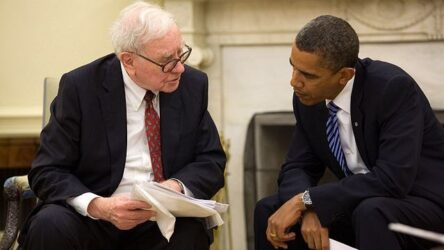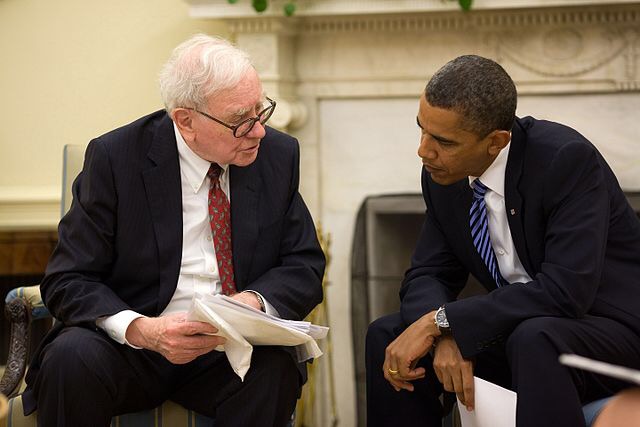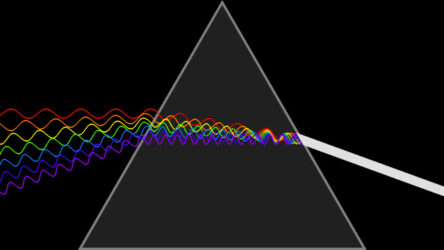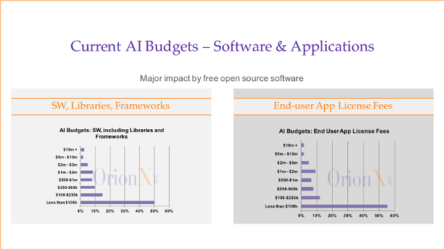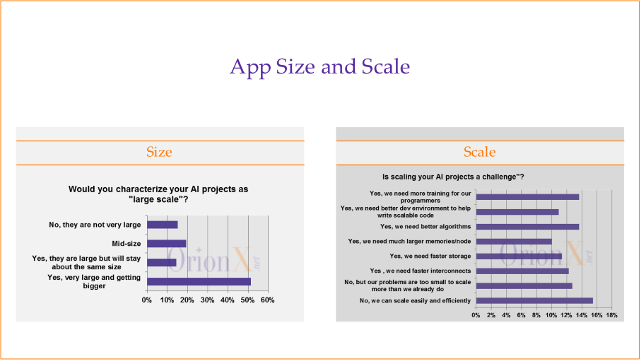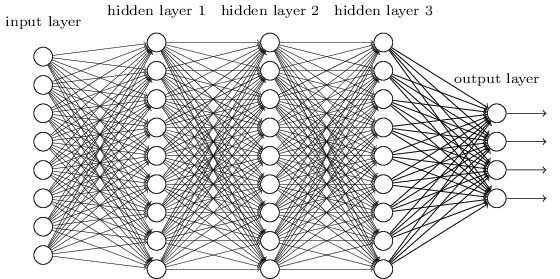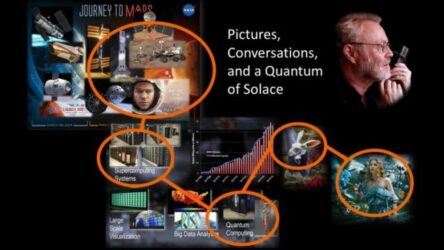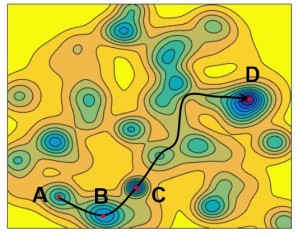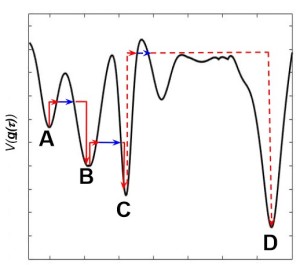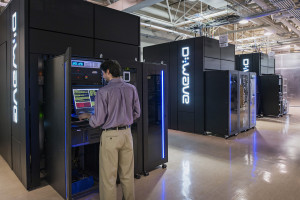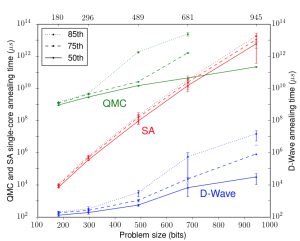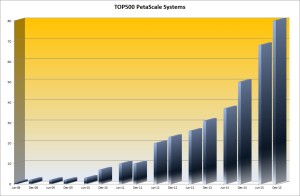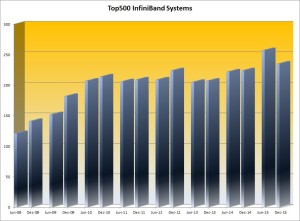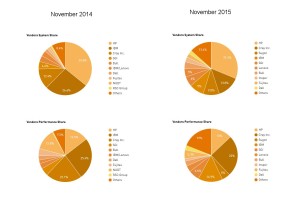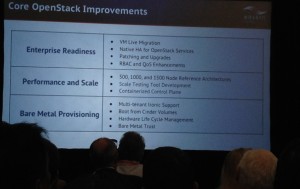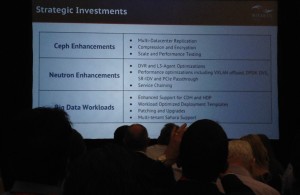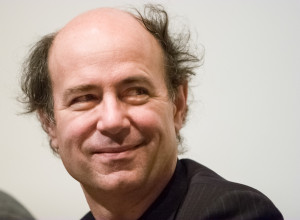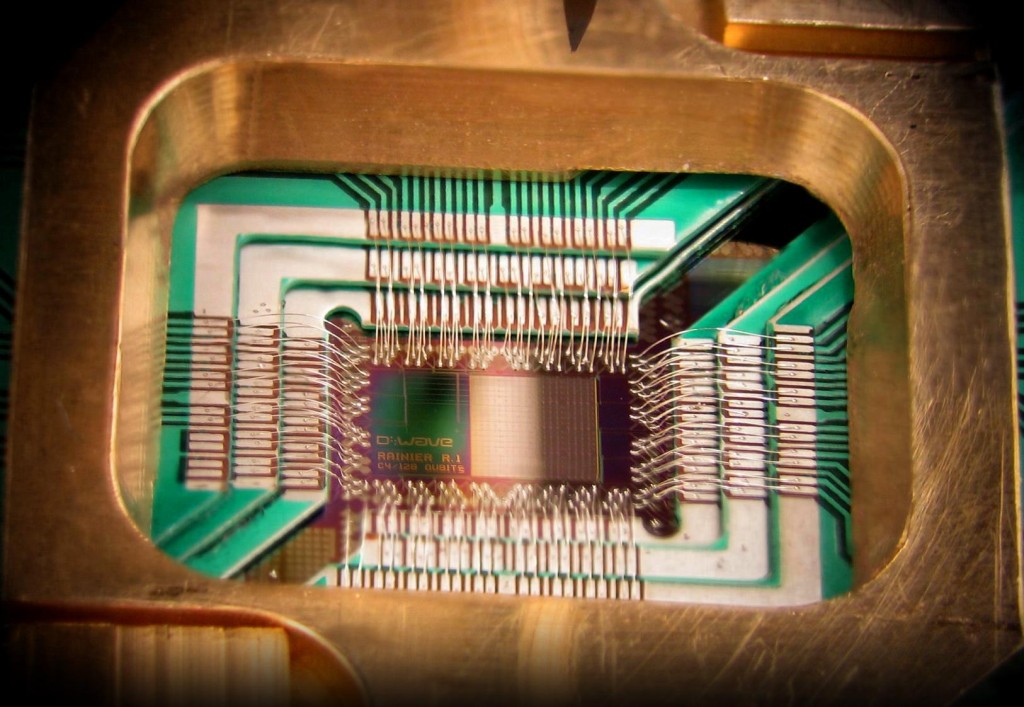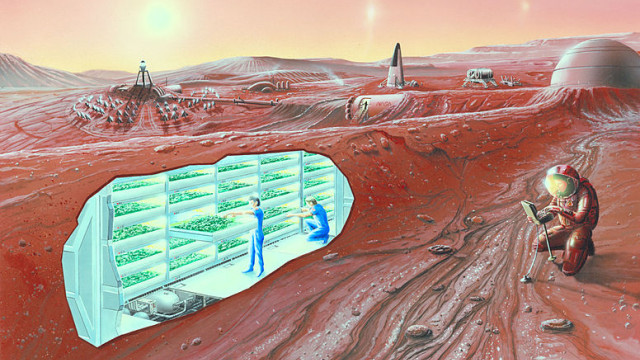We are trying something new, posting the transcript of a podcast. We start with one of the more popular OrionX Download podcasts on 5G. It was described as “probably one of the best discussions anywhere about 5G” and I obviously agree! 5G is a big deal as a technology and as a matter of geopolitical importance.
What is 5G and Why is it a Big Deal?
Welcome to The OrionX Download. This is a podcast where we discuss and simplify the big ideas in technology that are changing the world.
Intro: Hello everyone. Welcome again to The OrionX Download podcast. This is Shahin Khan and today I have the pleasure of speaking with Walt Maclay who is the president of Voler Systems. Voler Systems is a company that does electronic product design, development, risk assessment, verification, and they do it for connected smart devices. They’ve got a lot of skills in sensors and wireless technologies, and of course wireless technologies and 5G communication are big trends that we are tracking at OrionX. So without further ado, we’ll go to our conversation.
Shahin Khan: Walt, thanks for being here. Please tell us more about you and Voler Systems, and how radio communication in general and 5G in particular play a role in everything that you guys do.
Walt Maclay: Well, thank you for the opportunity to talk today. Voler Systems is a design house. We do electronic design and firmware, so we’re designing devices and we’ve got really good experience with sensors and wireless communication. So we do IoT and wearable devices. We’re always interested in the latest in wireless because wireless is changing all the time and 5G is currently the latest in wireless. It has a big impact on a lot of areas. As we’ll talk about as we go.
Shahin Khan: We know that 5G is the next generation of mobile cell phone, radio communication; it comes after 3G and 4G so we expect it to be better, faster, cheaper, but maybe before we drill down into all that it promises, maybe you can put that whole thing in perspective, just radio communication from the sensor all the way to the cloud and back.
Walt Maclay: How does all that work? There’s a whole variety of different types of wireless communication because there’s a whole bunch of different capabilities and needs, and basically what you’re trading off all the time is the speed that you’re sending data, how far you’re sending data, and how much power you use. Now if you’ve got something that’s plugged into the wall, the power isn’t such a big deal, but on a cell phone or a wearable device, you’ve got a battery and it’s a big deal. And then the speed is very important. Your cell phone needs to carry voice, and now it needs to carry video, and now with 5G we’re talking about way higher than that. And then there are the devices that may send the temperature once an hour. The data rate is dramatically different. So you’ve got different types of communication. Bluetooth LE is extremely low power and can send the data 10 or 20 feet reliably to a cell phone. It sends fairly slow data and for many applications, which is perfect. If you want to get directly to the Internet and you want to have high speed data, 5G is the way to go. You’ve got a lot of different choices and that’s why you do
Shahin Khan: Now when you go through all of these different protocols, ZigBee, BLE you mentioned, traditional WiFi, and then when you go farther distances 4G or now 5G. I imagine that in a typical deployment, a whole number of these are at play, that even if you go with 5G, maybe the backend is going to be wired or fiber or whatnot.
Walt Maclay: Oh yeah. When you go to the internet, once you get to the backbone of the internet, it can go through optical, it can go through wireless, it can go through telephone lines. There’s all kinds of different things involved. It’s a very complicated infrastructure. But for the consumers, really it’s about getting to the cell tower. That’s true pretty much with everything. When I talk about Bluetooth LE, or even WiFi, it doesn’t go directly to the internet. It doesn’t go directly to a cell tower. You have a hotspot. Well, the cell tower is like a hotspot, except it’s provided by someone else that’s public and they’re everywhere. You can roam from one to the other. They’re almost everywhere. So the ideal situation for many applications is to transmit directly to a cell tower or a hotspot of some kind and to be able to roam and have them everywhere. Well, 5G, and 4G as well, do exactly that. But there are some others. There’s NB IOT and LTE M which are cellular based, but they’re lower power and they’re designed for lower data rates. These are complimentary to 5G and they go similar distances. They go many kilometers or many miles.
Shahin Khan: So let’s start with frequency spectrum because it’s hard to talk about 5G without getting to that pretty immediately. And it seems like a lot of what 5G promises are enabled by just the frequency bands that are available.
Walt Maclay: Exactly. Yes, we have to talk about some details to make it all clear. So there are three different bands. Two of them are already in use in 4G. There’s the band that’s below one Gigahertz and the band that is between one Gigahertz and six Gigahertz below. One gigahertz has a long range. They claim up to 20 miles. But I don’t know about that. That’s in ideal conditions. So if you’re out in the country and you put up a cell tower and aim it down a freeway, it’ll go for a long distance. And then distance the one to six Gigahertz is pretty good. You’re used to seeing it on your cell phone. You often don’t know whether you’re in the low band or the mid band and it works pretty well, not quite as far distance. What’s new in 5G is the millimeter wave band. This is above six Gigahertz, and it’s opening the band that goes all the way to 89 Gigahertz. Currently it’s primarily in the U.S. In the 20 to 30 Gigahertz range. This band has some big advantages. It’s new space that’s not being used. The lower bands below six gigahertz are getting pretty used up. Also, you can have much higher bandwidth, so it provides much higher data rates, so when they talk about high data rates, they’re talking primarily about the millimeter wave band. The downside of the millimeter wave band is it doesn’t travel very far and we’ll talk more about that
Shahin Khan: And in fact, speaking of that, really none of this matters. If it’s not available, what does the coverage look like now and how do we expect it to change over time? Who’s offering what
Walt Maclay: Coverage is very dynamic right now, I’ve got data from November of 2019 which is now quite obsolete. Then there’s some more recent data, but as of November, the major cities were covered with 5G and if you take California as an example, three of the four carriers didn’t cover the Bay Area. I think that they do now, and I don’t try to keep track on a month by month basis. It’s being built out very quickly. In the country, however, I think you’re going to find the availability is much less now. I believe that if you get a phone, pretty much any phone that’s 5G it will work on 4G. So if you buy a 5G phone, you’ll still have service. You just may not get any benefit from the 5G capability. So if you pay extra, what have you gotten?
Shahin Khan: Okay, so now 5G in addition to cell phones there’s obviously an IOT connection and it seems like there are classes of services that they categorize. What are those?
Walt Maclay: This is what’s really new about 5G. There are three different types of service that are very different.
The first one is enhanced mobile broadband or eMBB. This is the standard cell phone service that goes to computers, laptops, iPods, and whatever. This is going to give you much higher data rates up to two gigabits per second. Much faster than what you are used to.
The second one is ultra reliable, low latency communication or URLLC. This is a completely new category. Typically these will be on premises devices. For example, they’re used for a factory. Within the factory you can set up your own self service and cover your factory and have extremely fast, very low latency and very reliable communication wireless, but it could also be in a stadium for everybody to use their cell phones.
The third one is completely different. Massive machine type communications mMTC. This is really IoT; very low data rates. Latency is unimportant, but power is everything and it’s completely different from the others, and the thing is that they haven’t even finished the standards for massive machine type communications or IoT. What’s available today is NB-IoT and LTE-M which have been built out in 4G cell towers. Today, IoT hasn’t really changed on 5G
Shahin Khan: When we talk about inside the premises, as you mentioned in a factory, why not just use WiFi? Why do you need to go 5G inside the factory?
Walt Maclay: Good question. WiFi is also improving and both WiFI and 5G are using new technology that’s providing more devices in an area and lower latency. I’m not aware of the ultra reliable low latency communication being offered from WiFi. So it seems that there’s something special there. But yeah, WiFi is definitely a competitor for this type of application.
Shahin Khan: Right, because sometimes I think just the combination of BLE and WiFi should be good enough for a whole lot of use cases, and then maybe LTE-M to get out there and if all that works, then why make such a big deal about 5G? But we’re going to discuss that. Okay, so bandwidth, everybody thinks of 5G immediately as it’s just going to be faster data communication. We know it depends on the frequency, but what can people expect to get and how is that different from geography to geography?
Walt Maclay: So the bandwidth you get depends entirely on which service you’re getting and what frequency band you’re in. If you’re in the sub one gigahertz band, you know they’re re-purposing 4G to 5G for that band, you’re going to get a modest improvement over 4G. You may not even notice, You’ll get something like a hundred megabits per second going one direction, 50 megabits per second going the other. In the one to six gigahertz band, it’s going to be significantly different. You can get up to 400 megabits per second, which is perhaps four times what you can get or three times what you can currently get in 4G – significantly different. But the really big improvement is in the millimeter wave band where you can get two gigabits per second. This is 20 times what you can get in 4G; a huge difference.
Walt Maclay: There’s a big issue there though. The millimeter waves don’t pass through buildings. They don’t pass through windows. If you put your hand in front of it, you block it. It doesn’t go through rain or snow. And the distance that it travels is a small fraction of a mile, so you can only find these in dense urban areas. You’re never going to have the millimeter wave band, as far as I can tell, in a rural area, and I don’t see how it can even be in suburban areas, because you’ll need a cell tower approximately every hundred to 300 meters to get the service and we know that there’s been a problem in putting lots of cell towers into suburban areas.
Shahin Khan: It’s already hard to have the ones that you already have there. Exactly,
Walt Maclay: And making them 10 times more dense or a hundred times more dense; I don’t see it happening.
Shahin Khan: Right, and maybe we’ll touch on it later, but of course there’s a whole lot of controversy about cell towers in general. Yes, let’s move to latency now. Latency is another promise of 5G. How does that look?
Walt Maclay: 5G offers very low latency, but we’ve got to talk about the conditions. For some applications latency is fine already. For voice it is fine. Even video. If you’re just downloading a TV show 4G works and 5G will work fine, but where latency is really cool: Let’s say you’re doing an AR or VR application, and when you turn your head, it needs to download the video instantly to show you video where you’re looking. Delay of tens of milliseconds is noticeable. 5G can get down into the one millisecond latency.
Walt Maclay: However, think about how far away the other person is. Let’s say you’re playing a game. If they’re on the other side of the country, it takes, well 186,000 miles per second. It’s about 30 milliseconds round trip across the country. You know that you’re not going to get one millisecond. You have to consider round trip time. When they talk about the latency, they’re talking about one direction going just from the transmitter to the receiver. So say it’s from your phone to the cell tower. It doesn’t count the time coming back. It doesn’t count the time going through the internet itself. And every time there’s a switch on the internet, you add about a millisecond. So in many applications you’re going to be 20, 30, or 40 milliseconds. In 4G you got maybe 50 to 100 milliseconds, so it’s better, but maybe not dramatic.
Walt Maclay: If you’re in those ultra reliable low latency applications were it’s just on a factory floor and is traveling a hundred meters, then you can get to one millisecond latency because the distance is very small and you’re not going through the backbone of the internet. So in some applications you can get it. I see one application would be for remote surgery. Across the country you’ve got a bit of a problem, but if it’s not too far. If it’s just in a rural area outside the city, you can get a very fast and very reliable connection, if you have the high frequency millimeter wave cell tower available in this rural location. The hospital would have to set up a cell site just for the application. So this would be a case where the local hospital has the tower and some remote surgeon is actually doing the surgery. There’s a shortage of surgeons in the country, but if you can get somebody in the city to do it, that would be a nice.
Shahin Khan: So two things come across to me there. One is interactivity and one is access to some remote expertise or talent. That is compelling. Yeah.
Walt Maclay: So having that remote is good, but with surgery having anything more than a 10 millisecond or so delay, you begin to notice that you move something and it didn’t seem to move when you moved it and it really interferes with your ability to move. You know, if you move your hand and your hand doesn’t move when you said to move it, your brain doesn’t operate very well with that.
Shahin Khan: It feels like those movies when the dubbing is not synced up with the audio, so the perception is that poor,
Walt Maclay: Your perception is on the order of tens of milliseconds. If it’s 10 milliseconds, you’re fine. At 50 milliseconds it’s very noticeable.
Shahin Khan: Interesting. Interesting. Very good. So we kind of had the similar jump going from 3G to 4G. I remember that and that really did not seem to be a big deal. Walt, would you paint a picture for us of what’s going on, on the standards side and summary of what all is being promised.
Walt Maclay: Okay, that’s a big topic. So first, if all you did was use your cell phone to do voice, when you went from 3G to 4G you didn’t notice any change. But there are services that are provided that rely on 4G that have made things very different. You have the Internet on your phone in real time, where prior to 4G you didn’t. It has made a big difference, but it happened maybe just a little slowly and people didn’t really notice. But some people noticed, and it turned into billion dollar industries. There are startups where their business is possible because of 4G.
5G is probably going to do the same thing, but what they’re promising isn’t always available. You’re not going to have the millimeter waves in the country or probably not in suburbia. So those high speeds, and low latencies probably aren’t going to be available to you there.
Walt Maclay: Even in the dense city, if you’re indoors, the only way you can receive millimeter wave signals is to have a pico-cell. You may be familiar with pico-cells in 4G, they are handheld devices. If you’re in a busy area like a trade show, you want to have your own cell tower to guarantee that you can have cellular, so you bring in a pico-cell.
Well, you’ll be able to do the same thing with 5G. The antenna has to be outside because the signals don’t go into the building, but with that, and if you put one in every room, you can have 5G indoors in the millimeter wave band. Right now these are pretty expensive. They may be in the thousand dollar range, but they’ll come down. There are some things that have to be done and I suspect that a lot of this will happen and we’ll start to see 5G in those places in dense urban areas – the millimeter wave 5G that gives you up to two gigabits per second. They claim higher, but I haven’t seen higher yet.
Shahin Khan: You’re saying that it’s going to be hard to get everything that 5G offers at the same time?
Walt Maclay: Yes. For example, I forgot which magazine did this, but they went out and did some studies. They got some measurements of speed. It was with AT&T. They had AT&T take them to a place where they could get 1.8 gigabits per second. But they pointed out that when they were more than 100 or 300 feet away, so about 100 meters, they didn’t really get the same performance. So that means you’ve got to have a cell tower within about a hundred meters or less to get millimeter wave signals, and you can’t be indoors. You can’t be in your car. It can’t be snowing or raining. So this is very limited for right now.
Shahin Khan: Let’s talk about use cases. You already mentioned augmented reality, virtual reality. What else seems like a reasonable legit use case?
Walt Maclay: Well, for the ultra reliable low latency, there’s some fascinating use cases. I mentioned a few of them like remote surgery, use in a factory, and another one is on power distribution. Another use case is to send the signal down the power line for many miles. It’s just along the power line, and again this is on premise, this is not available to cell phone users. This is available just to the utility, but it will allow them to monitor and control the power lines better than they do now. This is a big deal. It’s all transparent to most people, but it’s a big deal.
Another one that’s more visible is in automobiles where 5G will go 2 kilometers down the road. It will be picked up by the car. The car will be able to communicate with the road and with other cars. You’ll be able to see around the corner traffic lights will be controlled to improve the flow of traffic. This is a smart city application. This could be a really big deal, particularly with self driving cars. And again, that’s not going to be picked up by your cell phone. That’s going to be picked up by your car.
So there are some very interesting things that are coming up. Another one would be if you get a large group of people together in a stadium or an entertainment facility, you can have the millimeter wave band in that facility and everybody can have communications at very high speeds and very low latencies through their cell phones and other devices. Who knows what kind of new interesting things will happen. Probably in the realm of entertainment. Entertainment is a really big area and so I expect a lot to happen in that area.
Shahin Khan: Well, you’re right, if you’re sitting in a stadium and you can just watch a replay on your own phone from five different angles, that’s new.
Walt Maclay: That could happen. But what will be most interesting will be the things we can’t even think of.
Shahin Khan: All right. It’s now coming back to the end-to-end part of it. What do you need in an end-to-end way to have a real 5G infrastructure in place? And where I’m going with this is maybe not to the whole geopolitical aspect of this. Who makes these devices starting from the sensor all the way up. What is really interesting to me is the kind of vendors that are in this market that some of our audience may not have heard of besides the usual well known players.
Walt Maclay: Okay. There’s a huge infrastructure that’s providing 5G. You start out with the network suppliers, everybody’s heard of AT&T, Verizon, T-Mobile, and Sprint. There are the phone manufacturers, Motorola, Apple, LG, and many others. And then there’s equipment manufacturers. They make equipment that’s used, for example, in the cell towers, Ericsson, Nokia, and many others. Then there are the companies making the semiconductors to go into the equipment, Qualcomm, Intel, Marvel, ARM, AMD, Xilinx, and many others. There are others beyond that. You could get into all kinds of things like sensors. For example, services. There are companies, that only make IP. They license technology that goes into all of these things. So there are hundreds or thousands of companies that are involved in 5G.
Shahin Khan: You know, I’m just gonna make a comment and that may very well be why your business is so critical. If you were just the average manufacturer and you’re trying to get into the IoT business, just making sense of all of that requires folks like your team who really know what they’re talking about in this area.
Walt Maclay: Yes. If you just want to use a phone, you go to AT&T, Verizon, T-Mobile, or Sprint, and they’ve worked with all these other companies to provide you the service. So it’s very simple. We do the same sort of thing. You want a device that connects in a certain way. We can give you the advice on what technology works best for your application.
Shahin Khan: A few other things we haven’t talked about. One of them really is device density and you keep reading that the spec for 5G is 1 million devices per square kilometer. Is that real? And wasn’t that kind of solved already with just a whole bunch of Wi-Fi hot-spots in one place?
Walt Maclay: Wi-Fi isn’t going to get you that kind of density. That’d be an awful lot of hot-spots interfering. 5G does claim a million per square kilometer now because some of the claims aren’t entirely real, I take it with a grain of salt, but they have done some things that do make this possible. For example, the antennas are directional, so you’ve got all the bandwidth in one very narrow direction and then just a few degrees over, you’ve got all the bandwidth again in a different direction. Well that dramatically increases the number of devices that you can have.
They also have not only split up the bandwidth by time, they split it up by frequency. So they’ve done a lot of things to increase the amount of devices that you can have now, even if it’s a lot less than a million per square kilometer. For right now. What that means is when you are traveling on 5G, you should not see the drops that you see with 4G.
Shahin Khan: I see. Because there’s just enough capacity and there are so many different ways to get to the tower. Right? Yes. I see.
Walt Maclay: Now if you move out of an area that has 5G, you might see a drop.
Shahin Khan: Right. But back to the whole stadium thing, how are they solving it now when without 5g you can get 4g in a stadium.
Walt Maclay: They have to have a lot of cell towers or cellular sites to handle the service. You’ll be able to do it with a fewer number of sites with 5g, but what you can’t do now is you can’t get to two gigabits per second speed and the low latency and in something like a stadium, that’s what’s going to make a big difference.
Shahin Khan: Right, right. Okay. Along those lines is where is the device, the whole global positioning and location tracking and the precision with which you can do that and 5G promises a lot in that area too.
Walt Maclay: That’s right. So location of a device is a big deal. There are all kinds of capabilities and services that require location and then it’s a big deal that you may not want people to know where you are. You can turn it off. So with 5G they claim they’ll be able to locate you within about a meter. Now, whether it’s an absolute meter or just a meter this way or that relative, a meter is pretty precise.
But if you think about it, you already know which direction someone is because you’ve got this directional antenna. On top of that they’re measuring signal strength, which gives you a pretty good indication. Though signal strength can change rapidly without a change in location. And then there’s a certain amount of triangulation. And now we’re going beyond what I know, but instead of just knowing that you’re within the cell tower range, which is within a mile or two, they’re going to know very close where you are perhaps better than with GPS.
Shahin Khan: Interesting. Interesting. And I think it’s also, I remember in the early days of cell phones when they didn’t have GPS, they would have to really rely on whatever towers were around you and try to figure out where you might be with some level of precision, but far from what GPS gives you. So this thing is going to get close to GPS or better, perhaps better. That’s impressive.
Walt Maclay: Now, depending upon which band you’re using, it may work indoors, and it may be able to tell you which floor you’re on. If you’ve got an emergency, and all we know is that you’ve got a phone in a certain location in the city, they don’t know which building you’re in or which floor you’re on. You could be dead before they find you. Now they’re going to know exactly where you are. So this could be a big,
Shahin Khan: Oh, so this is the stuff you used to see in movies and they now have it for real. Yeah. Interesting. Let’s talk about power. You mentioned that a big part of this is how far you go and how much data and how much power.
Walt Maclay: Yeah. So one of the things that 5G advertises is low power. Well, you can’t get everything for free. When you’re going really high speed and long distances it’s not low power. The IOT service will be low power, but that depends entirely on how much data you’re sending and how often you’re using it. So the 5G itself is not really low power. In fact, when you’re in the millimeter wave band, you’re using more power. One issue they’ve got with the 5G cell towers is they use about three times as much power as 4G, so they’re not so green, so there’s some things people complain about.
Shahin Khan: Right. I want to mention that we were both in a meetup recently that talked about power harvesting and I just wanted to mention the concept to our listeners just so they know that is going on as well, if you might speak to that a little bit.
Walt Maclay: Yes. Energy harvesting is fascinating and it’s growing. It uses sources like temperature differences, solar power, motion, and RF energy, for example. It pulls energy out of the air or out of the environment and converts it to electrical energy. It’s a great idea to reduce the need for batteries. The biggest limitation in energy harvesting is that it generates generally microwatts of power. Using solar power you can get more, but you might need a pretty big solar cell, so you’re not going to see energy harvesting replacing the battery or even recharging the battery on your cell phone unless you’re barely ever using it.
Shahin Khan: But it’s definitely an interesting addition and it’s free.
Walt Maclay: It’s a real interesting space. If a device doesn’t send very much data; if the sensor doesn’t use much power; energy harvesting is very interesting.
Shahin Khan: Right. I always imagine a vending machine in the middle of the desert or something.
Walt Maclay: Yes, a device in the desert can have a pretty good sized solar cell. So yes, it can easily run on energy harvesting.
Shahin Khan: Okay. The most important thing we haven’t talked about is cost. And I know that as an engineering shop, that’s exactly what drives all the trade offs that one must do in a design. So let’s talk about that and how that limits or opens up new markets.
Walt Maclay: Well, so if you look at 5G, I haven’t priced out phones, but I’m sure you pay a premium to get 5G. There’s more technology. The actual cost to the manufacturer is a bit higher, and I’m sure right now they’re making a higher margin so it’s significantly more. But take a look at something like IoT. I mentioned that in fact, IoT on 5G, they’re not really providing anything that wasn’t already here, but the cost for doing IoT direct to the internet has been dropping. A couple of years ago it was several dollars per month to have that service. It’s gotten down to well below a dollar a month depending upon the amount of data, but if you’re sending thousands of bytes per month, that’s trivial, so it’s very low cost.
As the price goes down, new uses come up, for example, wearable devices can now communicate directly to the Internet where one or two years ago the coverage wasn’t there. The only way to do it was you used Bluetooth or WiFi going to a phone and the phone would go to the Internet. Having a wearable device that requires a phone is often inconvenient. Now it can communicate directly.
Shahin Khan: Excellent. Very, very fascinating. Well, 5G continues to be a big mega trend of our times and really important in many ways. Before we close, maybe we can touch a little bit on the health care concerns of 5G. We mentioned that earlier in the program, that there is a lot of controversy, there’s a lot of misinformation. What is your perspective on all of that?
Walt Maclay: Well, there are people who are concerned about the millimeter wave frequencies. They haven’t been well studied for their effects on humans. If you remember a number of years back, the same issue was discussed about the lower frequency bands in any cellular phones, and in fact there are requirements to minimize the amount of radiation absorbed by the head when you’re using a cell phone.
There have been many, many studies, some of them paid for by people with an interest. So some of the studies are suspect. The problem is probably not a big deal, but there’s still uncertainty even in the lower bands. And I think in the higher bands, the same thing’s going to happen. It’s a trillion dollar industry where people want the results to come out a certain way. So there are going to be many studies that are slightly biased and you may not even know that they’re slightly biased, so we’ll never get this controversy to go away completely. There’s concern and I think there will continue to be concern for some time.
Shahin Khan: Yes. In agreement with you. I just don’t think there’s enough data and the data that is there seems just insufficient. That’s hopefully something that the industry will address.
Walt Maclay: Well the industry may try to address it, but if the industry backs a study that study is suspect.
Shahin Khan: That’s right. Well, I don’t know if I’ll include this, but I’ll share this quote from one of the VCs that said, no conflict, no interest! Very good. Thank you, Walt. Thank you for making the time and this very informative session. I look forward to staying in touch and track this thing as it progresses.
Walt Maclay: I have enjoyed the opportunity to talk and it’s a topic I enjoy talking about.
Shahin Khan: Perfect. Thank you.
Outro: That was great.
I want to thank Walt Maclay again for being with us and taking us through this very, very interesting conversation.
Before we end, I want to summarize what all 5G promises: it promises speed, low latency, high density in terms of number of devices per square kilometer, better precision in terms of positioning and location tracking, low power, high coverage, and a whole lot of backend efficiencies, including the three classes of service that we talked about.
On the other hand, you’re not going to get all of the above at the same time, or if you do, it’s going to be a very special situation. And then there are still lingering questions about its health effects, which in my opinion is entirely because there’s just not enough data, there’s not enough testing and not enough data to convince everybody, which is unfortunate because there’s also a lot of misinformation that can get in the way of the adoption of the technology unjustifiably.
So, with that, I look forward to the next one. Thank you for being here.
Shahin is a technology analyst and an active CxO, board member, and advisor. He serves on the board of directors of Wizmo (SaaS) and Massively Parallel Technologies (code modernization) and is an advisor to CollabWorks (future of work). He is co-host of the @HPCpodcast, Mktg_Podcast, and OrionX Download podcast.


